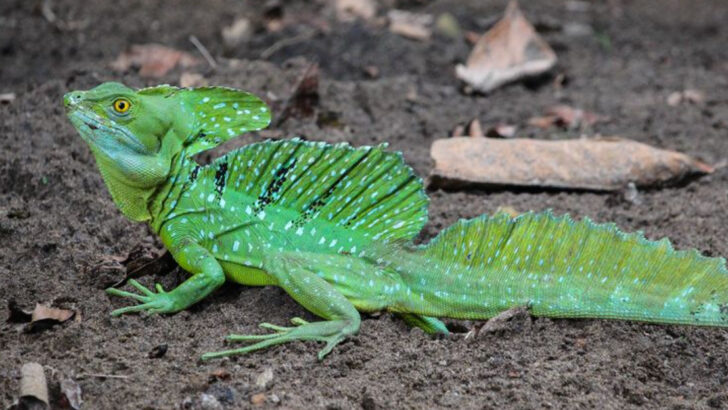They don’t make their own heat—so they steal it from the world around them.
Cold-blooded animals are the sunbathers, the shade-lovers, the survival artists of the animal kingdom. They don’t burn fuel to stay warm. They soak up life, literally, from rocks, rivers, and jungle floors.
This isn’t a weakness. It’s a superpower. It means they can slow their heartbeats, vanish into mud for months, or strike with lightning speed when the moment is right.
From color-changing reptiles to underwater aliens, these 17 cold-blooded creatures aren’t just surviving—they’re thriving. And they’re cooler than you think.
Komodo Dragon
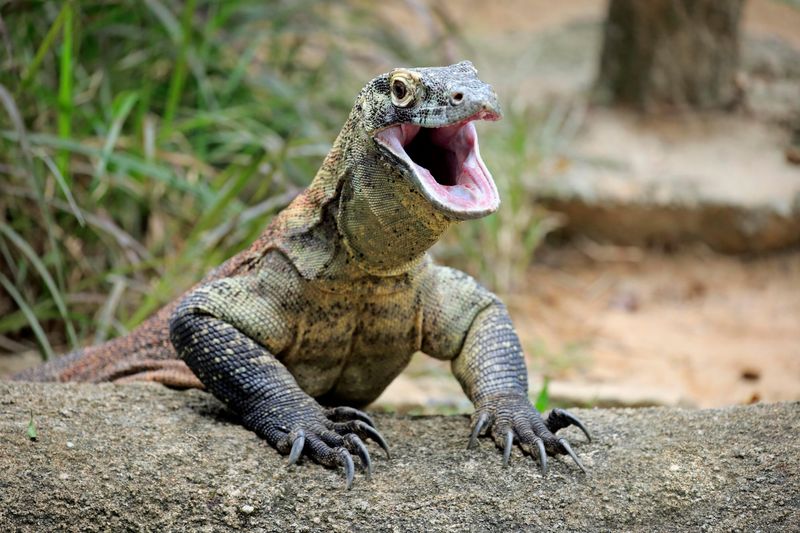
Imagine a creature as imposing as a dragon but real. The Komodo dragon, native to Indonesia’s Lesser Sunda Islands, is the largest living lizard. With its powerful limbs and keen sense of smell, it rules its habitat as a top predator.
Despite its fearsome reputation, the Komodo dragon plays a crucial role in its ecosystem. It controls prey populations and helps maintain ecological balance. Interestingly, it relies on solar energy to regulate its body temperature, bathing in sunlight to stay active.
Did you know? Komodo dragons can detect carrion from miles away, thanks to their incredible sense of smell.
Axolotl

The axolotl defies expectations with its perpetual grin and feathery gills. Known as the Mexican walking fish, this salamander never undergoes full metamorphosis, retaining its juvenile features throughout its life. This trait, called neoteny, allows it to regenerate lost limbs, a subject of scientific fascination.
Axolotls thrive in the freshwater lakes of Xochimilco, near Mexico City. Sadly, habitat loss has endangered their existence. Their ability to regenerate makes them vital in medical research.
Fun fact: The axolotl’s name comes from an Aztec word meaning “water monster,” but they’re anything but monstrous!
Blue Poison Dart Frog
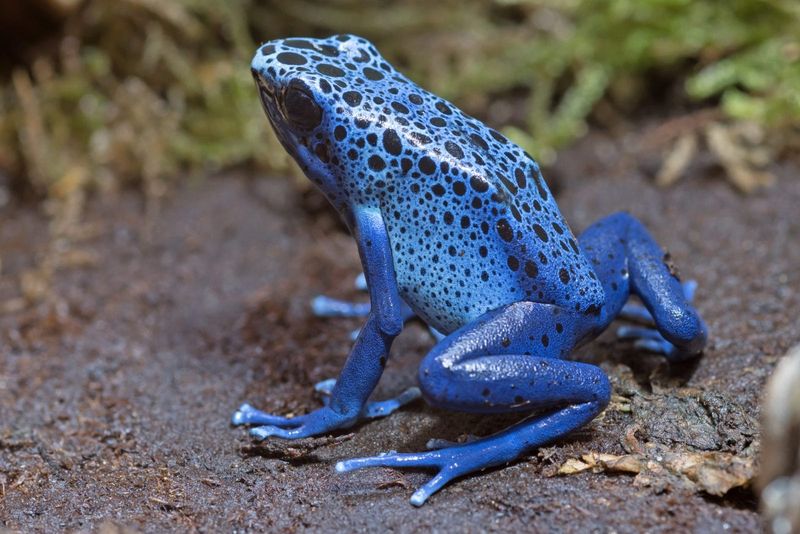
Draped in a striking cobalt hue, the blue poison dart frog is a vision of both beauty and danger. This diminutive amphibian, native to the rainforests of South America, uses its vibrant color as a warning to potential predators.
It’s a message: “I’m toxic.” Despite its toxicity, indigenous tribes have used the frog’s poison for hunting, a testament to its potency. Additionally, these frogs have a fascinating life cycle, starting as tadpoles in water before transforming into land-dwelling adults. Their vibrant presence plays a role in the delicate balance of their ecosystem.
Curious fact: Their color intensity can vary with diet.
Gaboon Viper
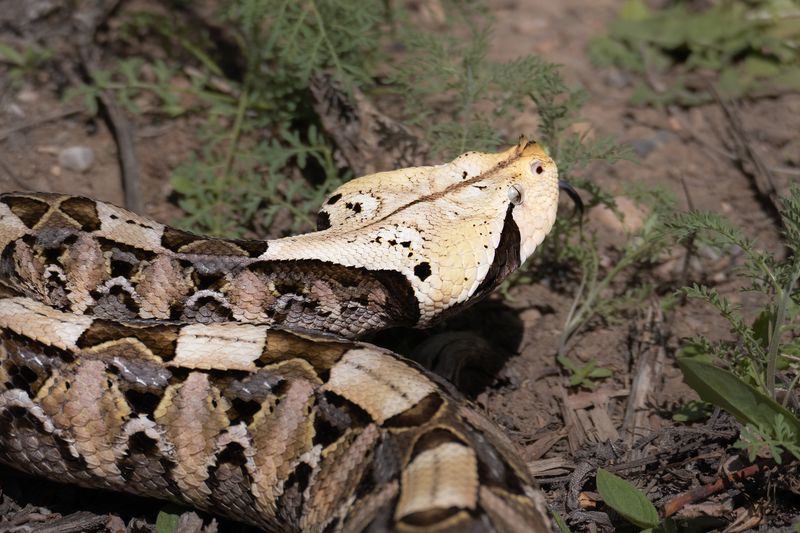
The Gaboon viper is a master of disguise, blending seamlessly with the forest floor. Found in the rainforests and savannas of Africa, it boasts the longest fangs of any snake, capable of delivering a potent venom.
Despite its deadly capabilities, this viper is surprisingly docile, relying on camouflage to avoid threats rather than aggression. Its intricate patterns make it a marvel of natural design, mimicking leaves and shadows with remarkable accuracy.
Fun tidbit: The Gaboon viper holds the record for the highest venom yield of any snake, yet it prefers to remain hidden and peaceful.
Chameleon
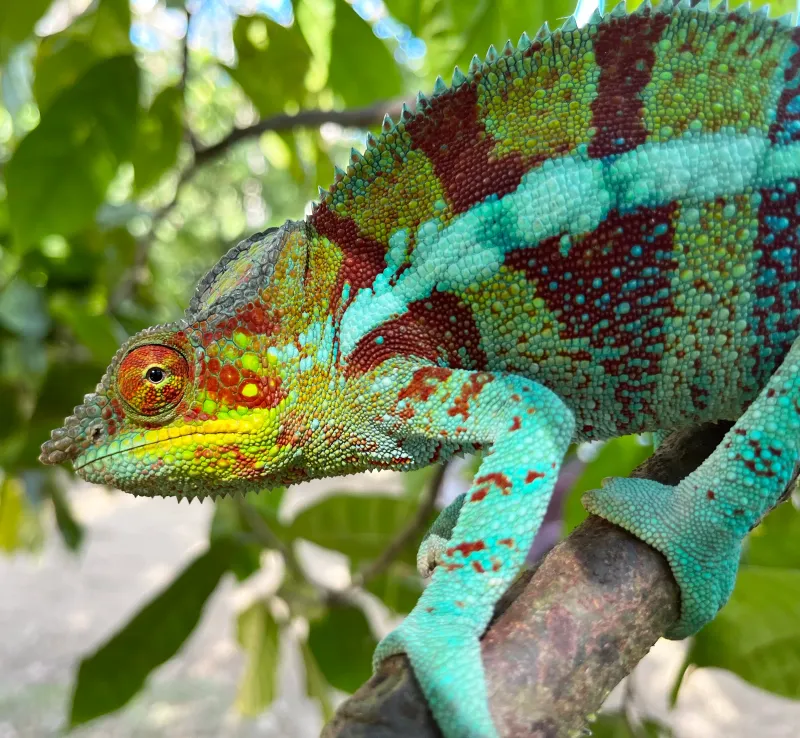
Chameleons are nature’s artists, known for their incredible ability to change color. This talent serves various purposes, from communication to temperature regulation.
Primarily found in Madagascar, these reptiles boast independently moving eyes, allowing them to scan their surroundings for insects without moving their bodies. Their specialized feet and prehensile tails make them adept climbers, navigating tree branches with ease.
A quirky fact: Chameleons don’t change color to match their environment but rather to express mood or social status. This makes them a captivating subject for nature enthusiasts and photographers alike.
Green Sea Turtle
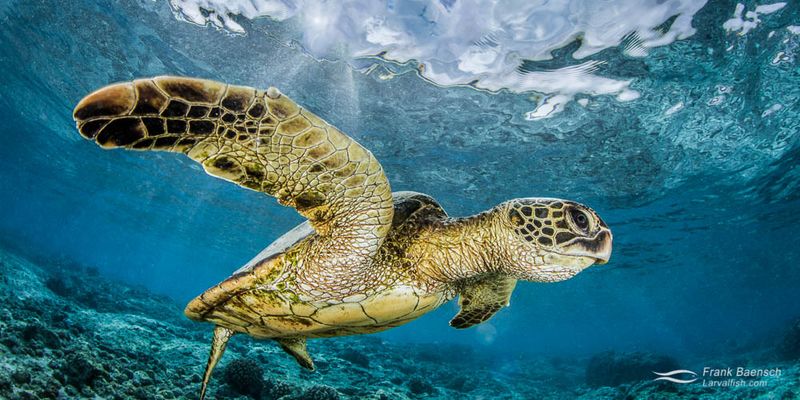
The green sea turtle embodies grace as it glides through ocean currents. These ancient mariners travel vast distances, navigating by the Earth’s magnetic fields.
They play a crucial role in marine ecosystems, maintaining healthy seagrass beds and coral reefs. Green sea turtles are named not for their shell but for the greenish color of their body fat, which results from a herbivorous diet. Conservation efforts are vital for their survival, as they face threats like habitat loss and poaching.
Did you know? These turtles can hold their breath for several hours while resting underwater.
Basilisk Lizard
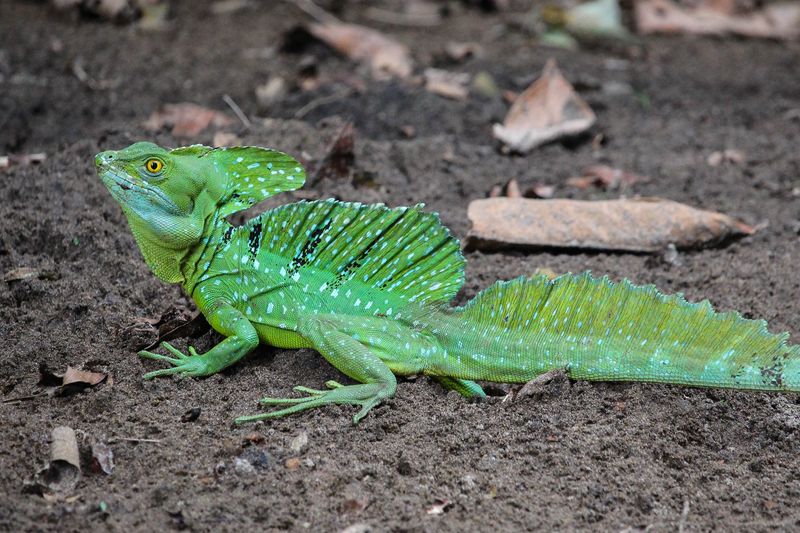
The basilisk lizard, often dubbed the “Jesus Christ lizard,” intrigues with its miraculous ability to run on water. Native to Central and South American rainforests, this reptile uses speed and specialized toes to achieve this feat.
It relies on its nimble legs to escape predators and catch prey. The basilisk’s crest and vivid coloration make it a striking sight among the foliage. While its water-walking is the highlight, the lizard is also an adept swimmer and climber, showcasing its versatility.
Curious fact: Basilisks can remain submerged for up to 30 minutes if threatened.
Marine Iguana

Marine iguanas, exclusive to the Galápagos Islands, are the world’s only sea-foraging lizards. Their black coloration absorbs sunlight, aiding in temperature regulation after cold ocean dives.
These iguanas graze on algae, playing an essential role in their ecosystem by keeping algal growth in check. Their strong limbs and flattened tails make them adept swimmers. Despite their prehistoric appearance, marine iguanas are gentle creatures, often seen basking on rocky shores.
Fun detail: Salt glands allow them to expel excess salt from their diet, often resulting in a “sneezing” action.
King Cobra
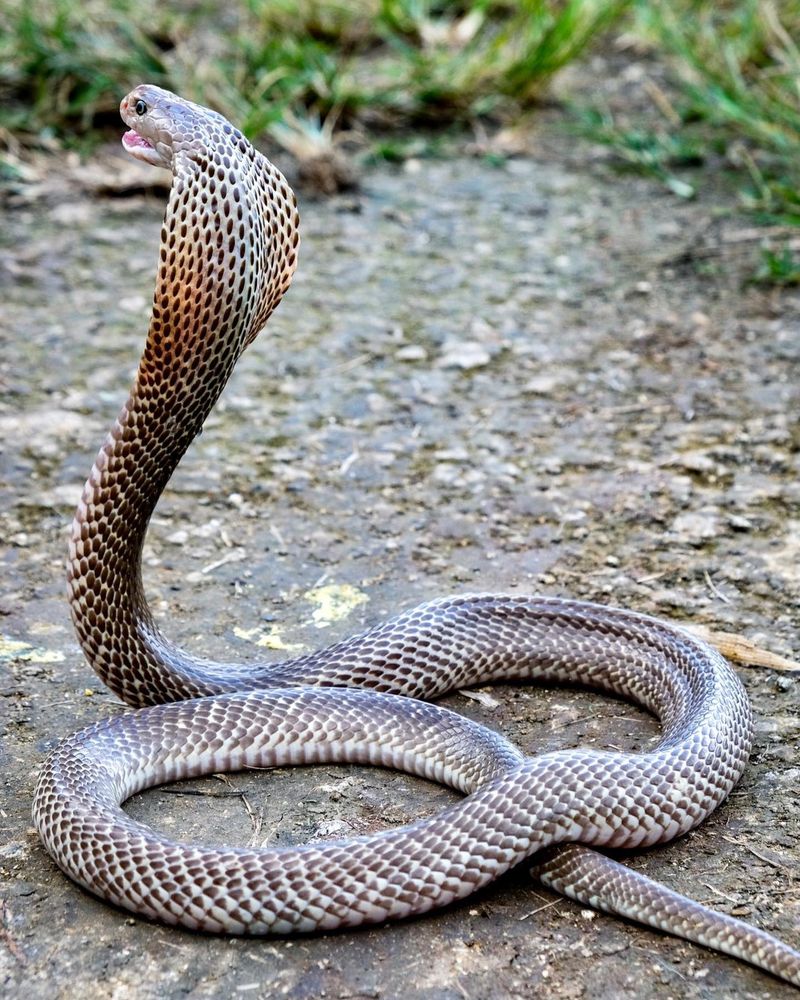
With a regal presence, the king cobra commands respect and awe. It’s the world’s longest venomous snake, with a range spanning from India to Southeast Asia.
Unlike most snakes, it constructs a nest for its eggs and fiercely guards them. This protective nature is just one of its many intriguing traits. Despite its fearsome reputation, the king cobra typically avoids confrontation, preferring to retreat. Its diet primarily consists of other snakes, showcasing its role as a top predator.
Fascinating fact: The king cobra’s venom affects the respiratory centers in the brain, making it incredibly potent.
Alligator Snapping Turtle
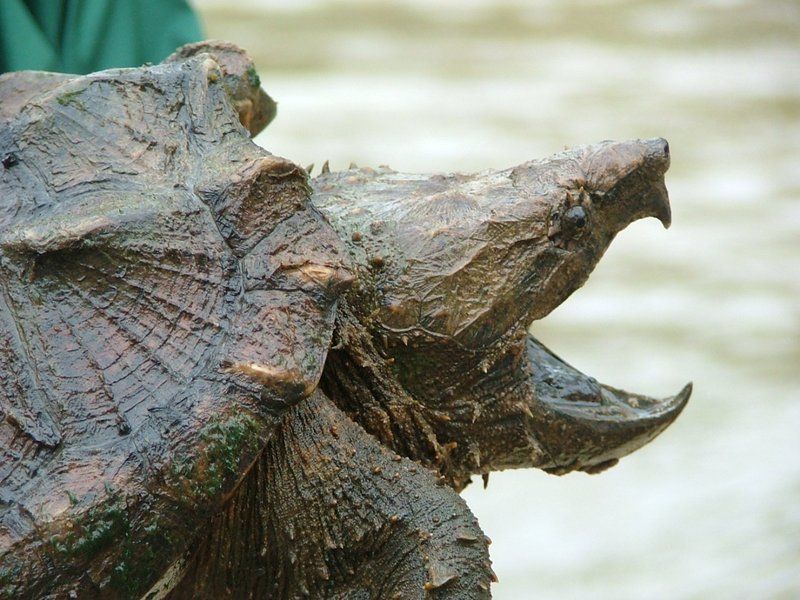
The alligator snapping turtle, with its primeval appearance, is often dubbed the dinosaur of the turtle world. This formidable creature resides in the river systems of the southeastern United States.
Its powerful jaws and spiked shell provide defense, while a unique worm-like appendage on its tongue lures prey. Despite its fierce look, it remains mostly docile unless provoked. The turtle’s ambush hunting method is a testament to patience and skill.
Fun tidbit: They can remain submerged for up to 40 minutes, waiting for unsuspecting fish to wander by.
Frilled Lizard
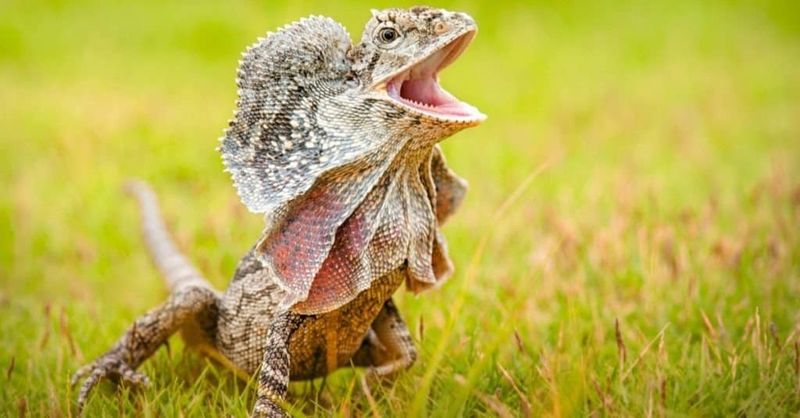
The frilled lizard is both a performer and a survivalist. Found in the woodlands of Australia, it’s famous for its dramatic frill, which it extends to intimidate predators.
When threatened, this lizard also stands on its hind legs and hisses, creating a memorable spectacle. Its frill isn’t just for show; it helps regulate body temperature too. These reptiles rely on speed to escape danger, often sprinting to the nearest tree.
Fun fact: Their frill is supported by long spines of cartilage, making it a lightweight, yet effective defense mechanism.
Saltwater Crocodile
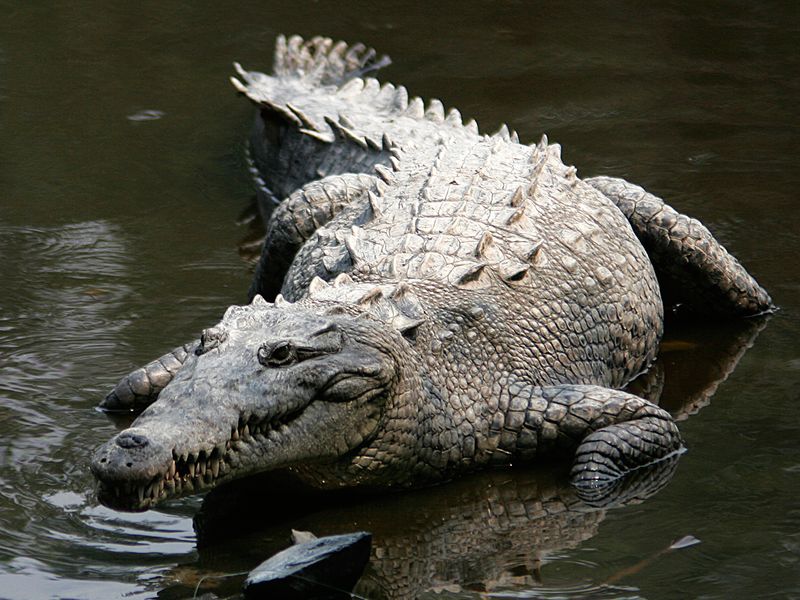
The saltwater crocodile is a true apex predator, reigning supreme in the waters of Southeast Asia and Northern Australia. This reptile can reach astounding lengths, earning it the title of the largest living reptile.
Its powerful jaws and stealthy nature make it a formidable hunter, able to ambush prey with incredible precision. Despite their fearsome reputation, these crocodiles play a vital role in maintaining healthy aquatic ecosystems.
Intriguing detail: Saltwater crocodiles can travel vast distances across open ocean, using currents to aid their journey.
Gila Monster
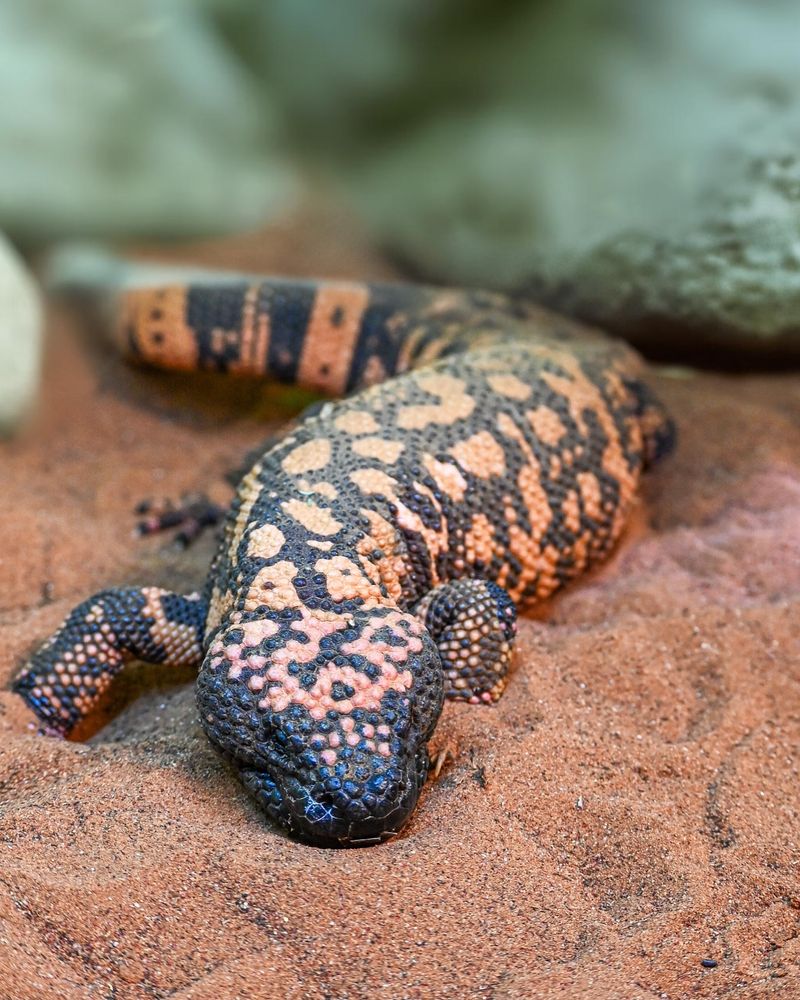
The Gila monster is one of the few venomous lizards in the world, and it carries its venom with a calm demeanor. Found in the deserts of the southwestern United States, it uses its potent bite as a last resort.
Its vibrant, beaded skin acts as a warning to potential threats. Although it moves slowly, this lizard is a patient hunter, feeding on eggs and small mammals. Its venom has been studied for medical purposes, offering insights into diabetes treatment.
Curious tidbit: Despite its fearsome name, the Gila monster is actually quite reclusive and prefers solitude.
Caiman
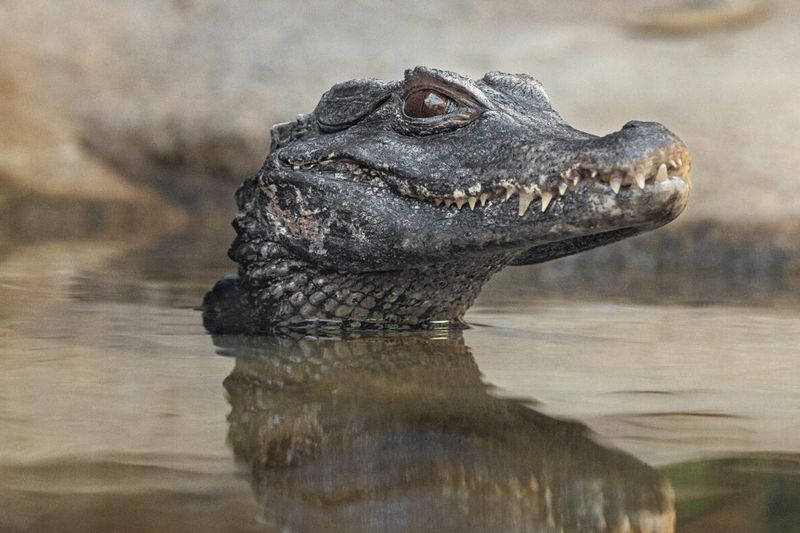
Caimans are stealthy residents of Central and South America’s wetlands. These relatives of alligators possess a unique charm with their armored bodies and keen hunting skills.
They play a crucial role in their environment, controlling fish and invertebrate populations. Caimans have adapted to a variety of habitats, from fast-flowing rivers to still ponds. Despite their fierce appearance, they often avoid humans.
Interesting aspect: Caimans are known for their vocalizations, using a variety of sounds to communicate, especially during mating season.
Tuataras
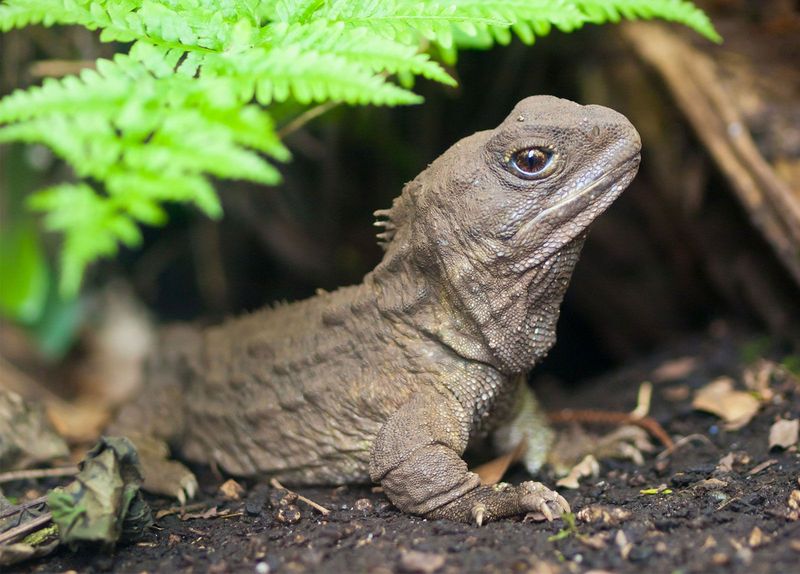
Tuataras are living relics, often mistaken for lizards but belonging to an ancient lineage of reptiles. Found only in New Zealand, they have survived since the time of the dinosaurs.
These creatures have a slow metabolism and can live over a century. Their unique third eye, visible as a small spot on the forehead, is a light-sensitive organ helping them regulate circadian rhythms. Despite their ancient origins, tuataras are vulnerable to modern threats.
Fun fact: Tuataras can hold their breath for nearly an hour while remaining still.
Red-Eared Slider
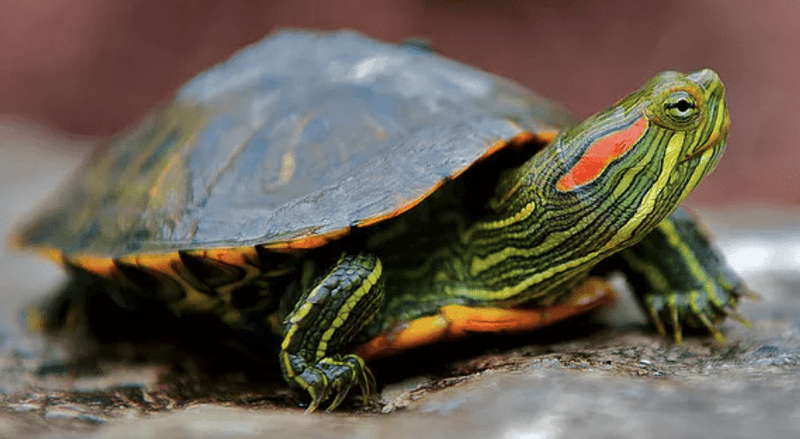
The red-eared slider is a popular pet but also a fascinating wild turtle. Native to the United States, these turtles are known for the distinctive red markings around their ears.
They thrive in a variety of aquatic environments, from ponds to slow-moving rivers. Red-eared sliders are adaptable and can even survive in urban areas. Their diet consists of aquatic vegetation, insects, and small fish, contributing to their local ecosystems.
Quirky detail: These turtles are skilled climbers, often seen basking on logs and rocks to absorb sunlight.
Flying Dragon Lizard

Imagine a dragon soaring through the skies, not in the realm of fantasy but in the lush forests of Southeast Asia. The Flying Dragon Lizard, or Draco volans, unfolds its magnificent wings, gliding gracefully among the treetops. This extraordinary reptile uses elongated ribs and skin flaps to create wing-like structures for flight.
A marvel of nature, it can glide up to ten meters between trees, evading predators with ease. Though small in stature, its ability to conquer the air with such elegance is unparalleled in the reptilian world. Its vibrant wings are not just for show; they play a crucial role in survival.
Did you know that these lizards communicate using body language and vibrant displays? Their dazzling appearance and unique abilities make the Flying Dragon Lizard an enigmatic creature of the wild.

